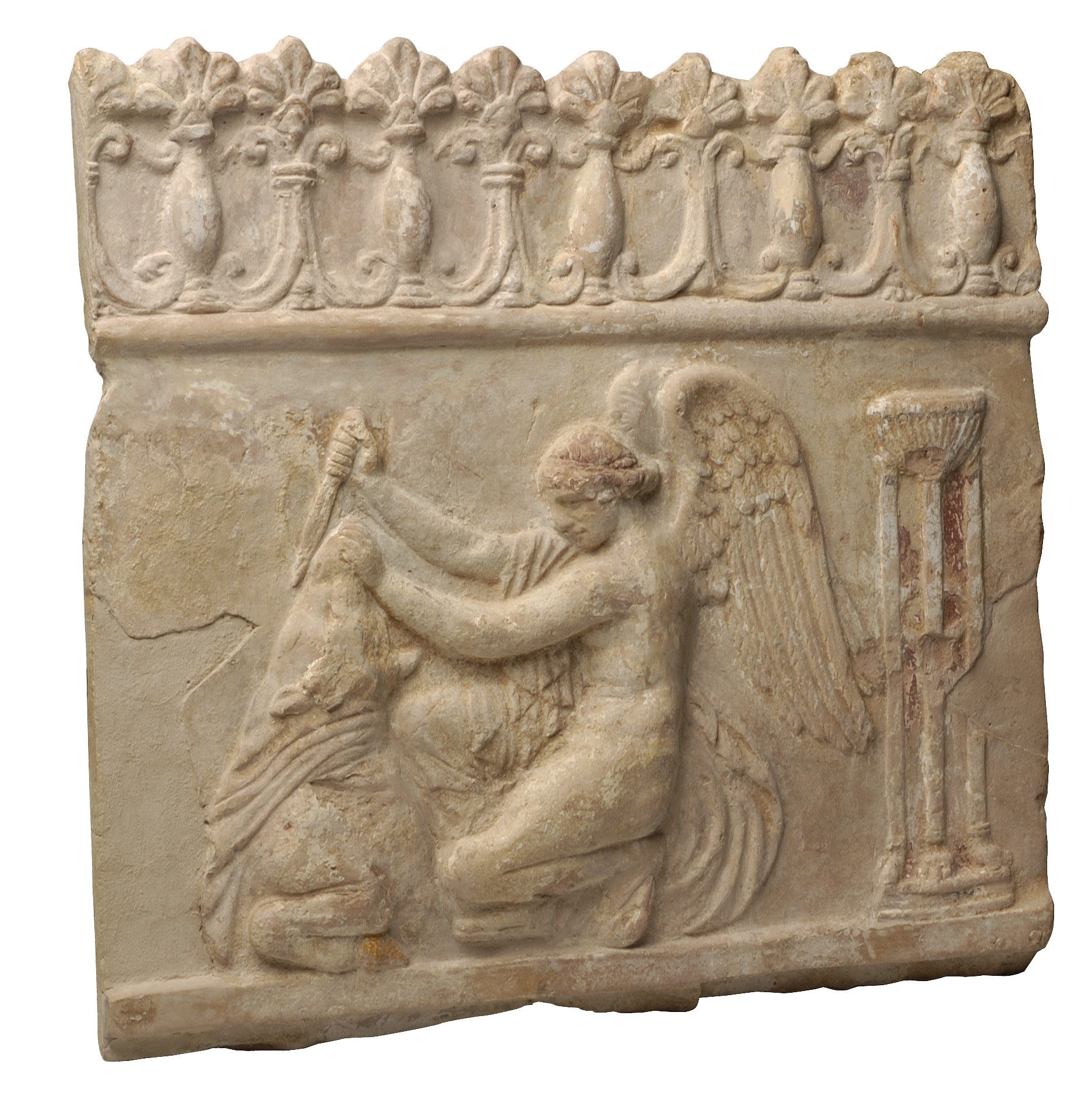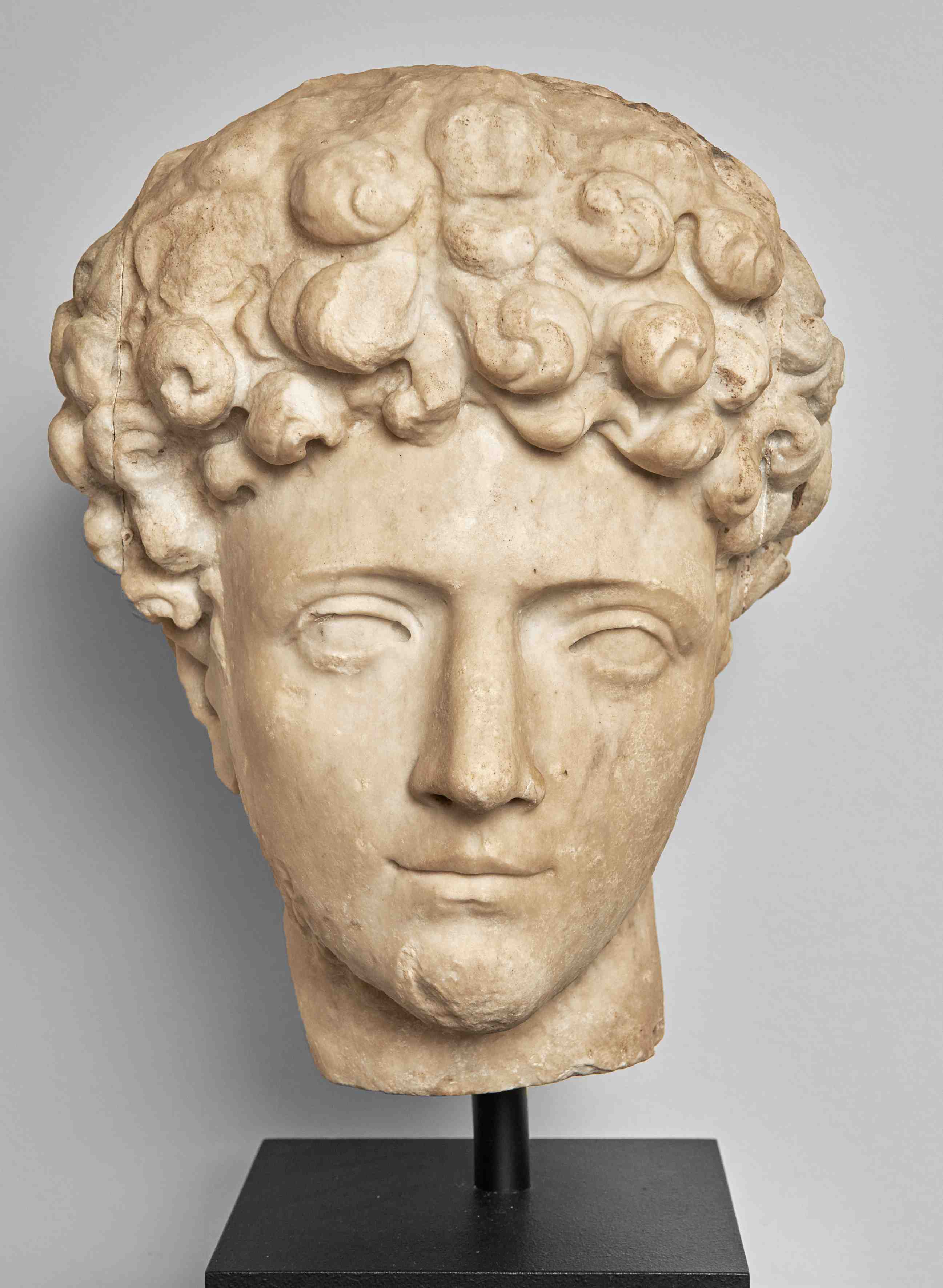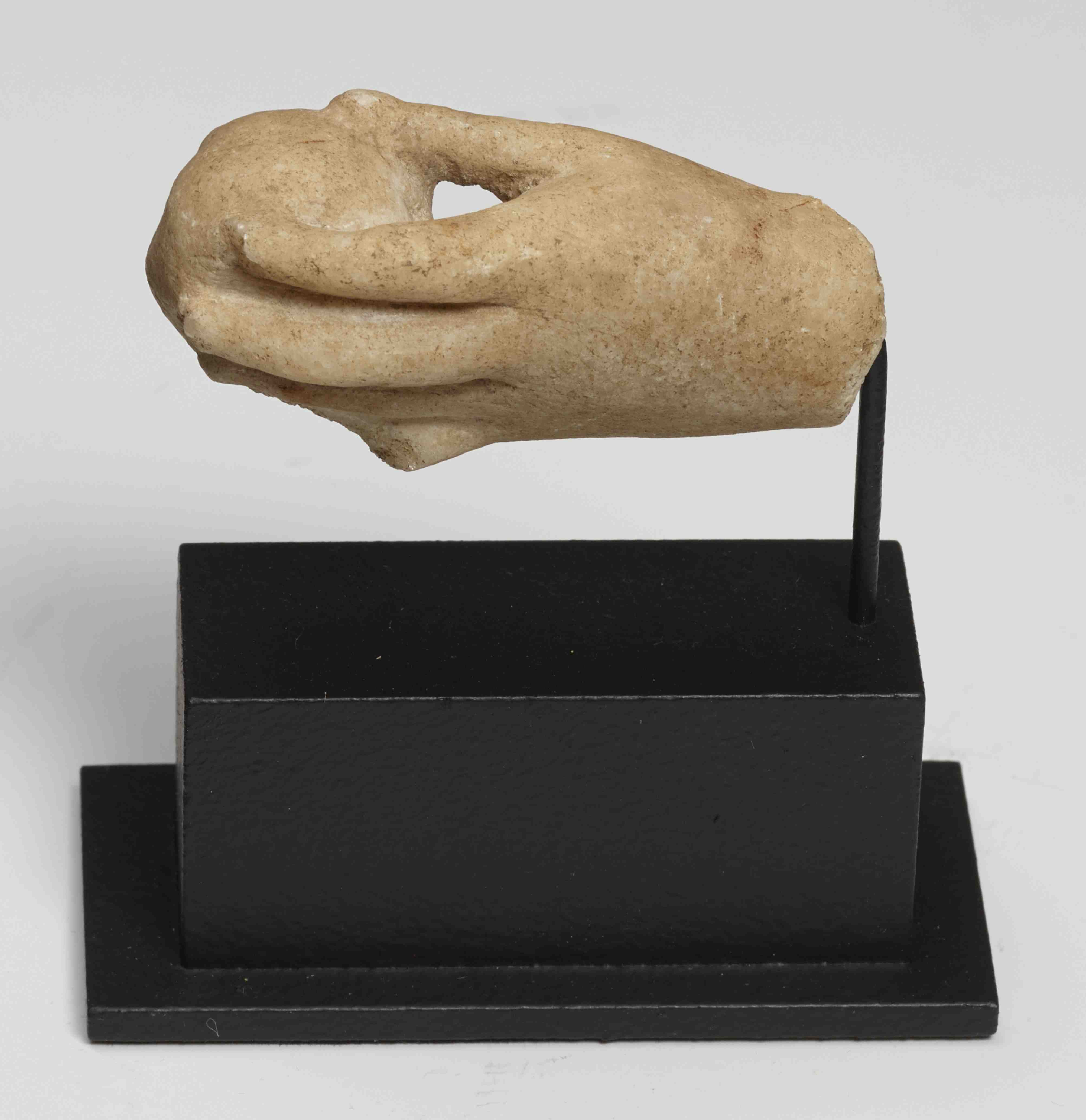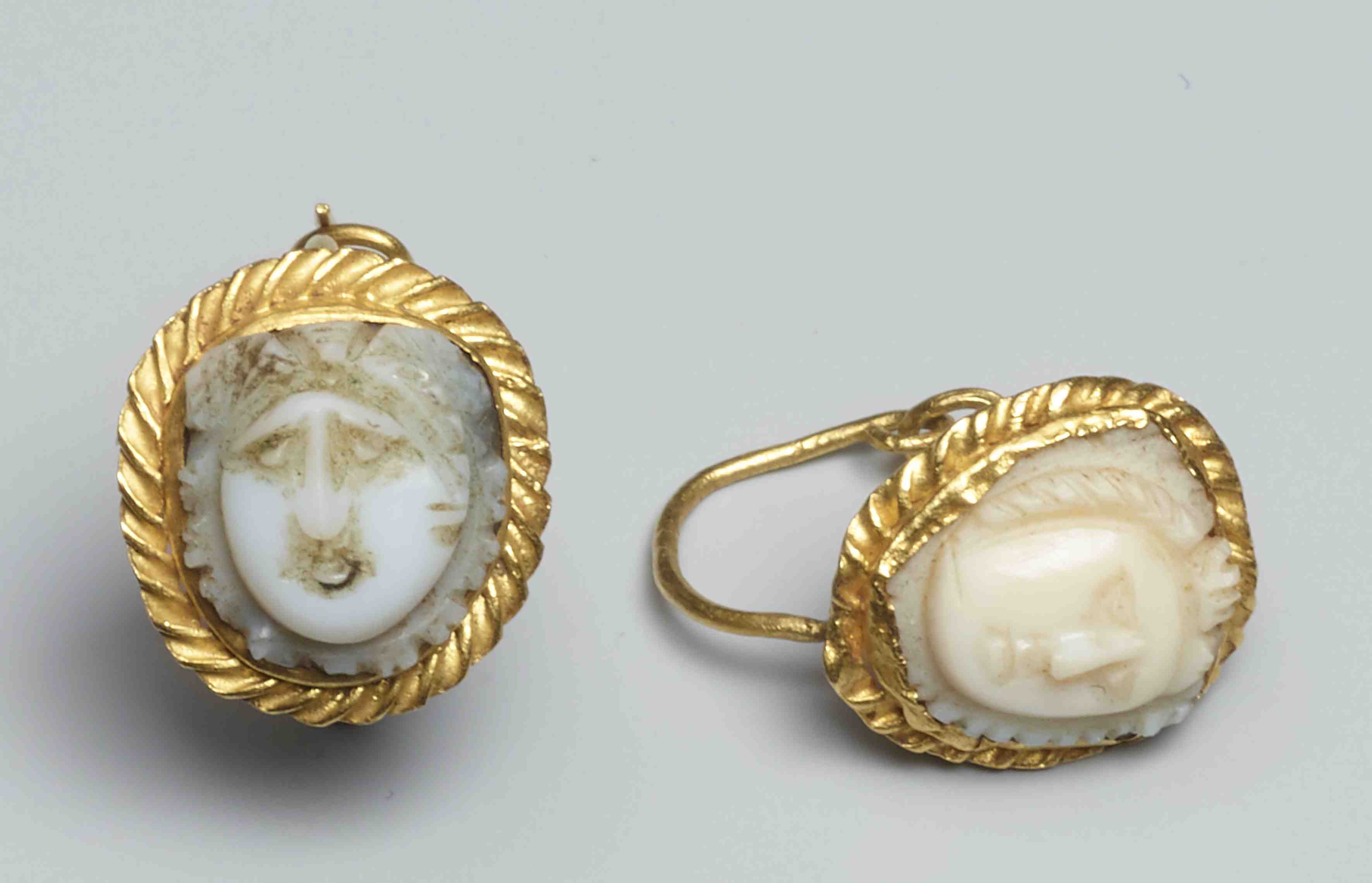Beneath an ornate lotus-palmette frieze, the goddess Victoria sacrifices a bull. Nude, apart from sandals and a himation that drapes over one shoulder and knee to billow out behind her, the winged goddess of Victory kneels over the bull, driving her knee into its arched back while she grasps it by the nostrils to pull its head upwards and back. With the neck thus exposed, she prepares to deliver the death blow with a knife held in her right hand. In contrast to this vigorous action (emphasized by the swirling drapery and fluttering wings), Victoria’s face is serene – marked only by a certain intensity in her gaze. Her hair, likewise, is neatly gathered and rolled at the nape, bound by a fillet. Considerable attention has been paid to the bull’s anatomy, with finely drawn forelocks, bent forelegs, a sharp hoof, and a sacrificial cloth around its neck. Remains of red, white, yellow and black pigments.
Named for the collector and scholar, Giampietro Campana, who first published them in the mid 19th century, terracotta panels such as this one were produced in and around Rome during the late 1st century B.C. and early 1st century A.D. to clad interior and exterior spaces. The style employed was dominantly neo-Attic, which famously experienced a revival during the principate of Augustus, with mythological and bucolic scenes frequently favoured. The motif of bull-sacrificing Victoria relied strongly on Classical Greek precursors, and unsurprisingly became a popular subject on Campana reliefs – an apt choice to link the military successes of the emperor with a hallowed semi-mythological past. For similar representations cf. British Museum (number 1805,0703.307 and 1843,0531.43), Altes Museum in Berlin (inventory TC558 and TC 8217.68) or Musée du Louvre (inventory 65.5171). The Musée du Louvre also holds a marble relief with the bull slaying Nike (MR 864 ; N 1136 ; Ma 307).
Note
Sacrifices to the chtonian (underworld) gods and heroes were made directly on the ground or in a pit, so that the blood of the victim might better be absorbed directly into the earth. The meat of these animals was not eaten, but rather burnt completely. This mode of sacrifice wash was employed before battles and, in such circumstances, great importance was placed upon ‘reading’ the entrails of the sacrificial animals and recognising the will of the god. This is how Xenophon, who travelled through Asia Minor with a Greek army in 401 BC, reported it. The army carried its own herd of sacrificial animals in order to be able to make decisions at any time. In both martial and peace-time settings, animal sacrifices were also intended to be remembered beyond the actual act. The entire sacrificial act could be depicted on wood or clay tablets, in relief, or as a sculpture and placed in the sanctuary in order to remain present to the deity for as long as possible.











